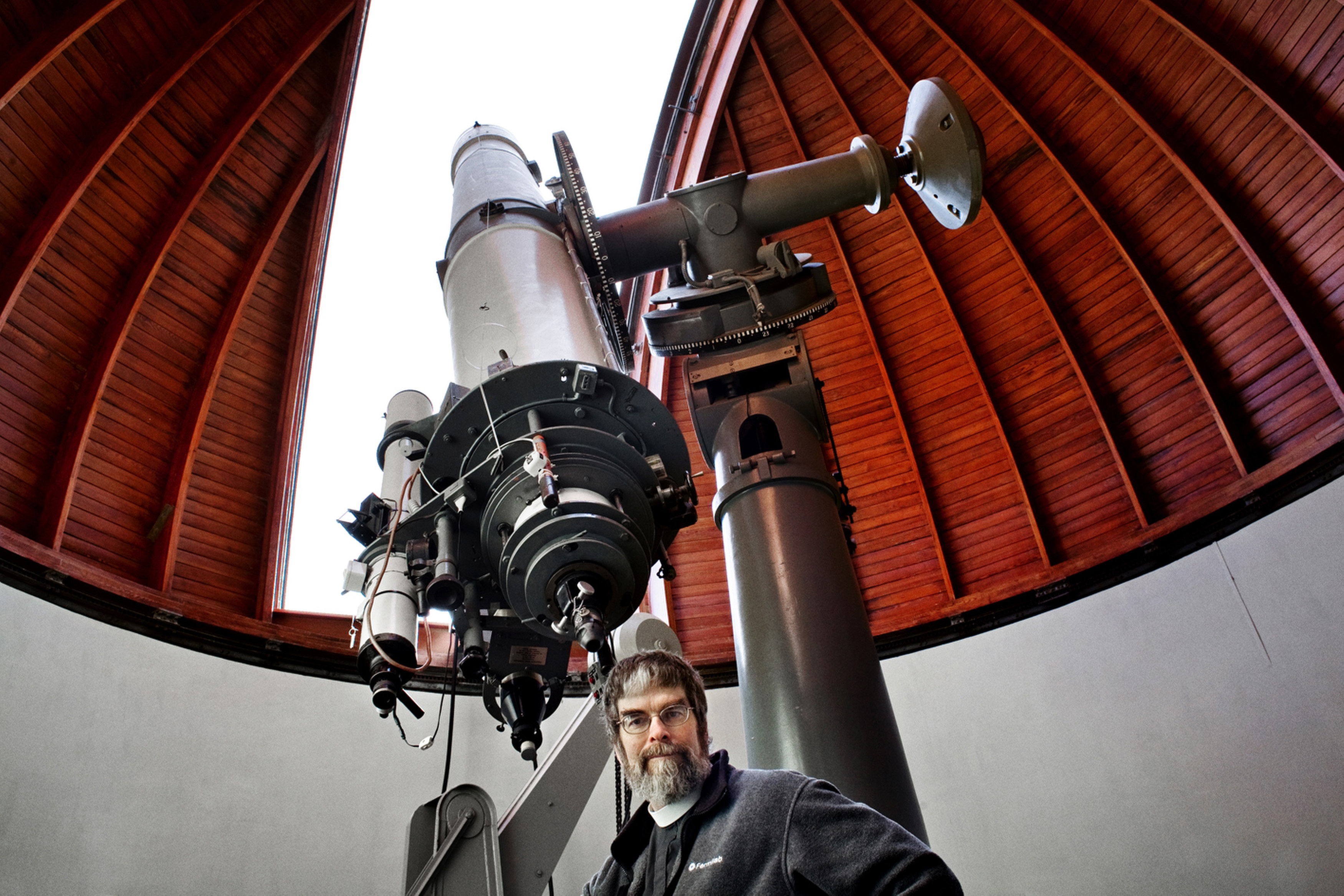BY DENNIS SADOWSKI
Catholic News Service
WASHINGTON (CNS) — When Apollo 11 astronaut Neil Armstrong gingerly stepped onto the surface of the moon July 20, 1969, Jesuit Brother Guy Consolmagno had no idea that someday he would become the director of the Vatican Observatory.
Sixteen at the time, he had followed the space program since Alan Shepard’s 15-minute suborbital flight eight years earlier. But becoming a scientist was not foremost in the mind of the teenage Consolmagno as he watched the grainy black-and-white televised images of Armstrong and Edwin “Buzz” Aldrin going about their tasks on the surface of another world.

Still, the events unfolding that Sunday evening 50 years ago left an impact on Brother Consolmagno, an avid reader of science fiction who especially enjoyed stories about what it might be like to travel into space.
“That put the connection in my mind that the things we fantasize about can actually happen. So dreams carry with them an important sort of reality,” he told Catholic News Service as the golden anniversary of the first moon landing approached.
Years later, Brother Consolmagno would pursue studies in astronomy and then enter religious life. Today he heads one of the most prestigious astronomical institutions in the world while living his vocation and continues to marvel at the possibility of traveling to other planets. He sees God’s handiwork in it all.
“I can feel God in any of that work,” he said. “To me, you feel God in the joy of the moment.”
The accomplishments achieved through scientific endeavors such as the moon landings can provide a glimpse into the way things work and what it means to be human, both key components of God’s creation, said Franciscan Sister Ilia Delio, professor of theology at Villanova University.
“It tells us about us and our capacity to invent, to discover that which has never been seen, that which has never been walked upon,” she said. “It tells us about the human person and the openness to this creation that God has given us the freedom to explore.”
Discovery also can serve — if humanity allows — to help people realize the universe is so much larger than the planet human beings currently inhabit, Sister Delio explained.
“It’s obviously very, very hard for us to get our heads around the fact that we are on a planet that’s moving through space, that space is filled with all sort of material life and perhaps intelligent life that we have yet to discover. But the landing on the moon shows we can discover new things when we thought never before this could be done,” she told CNS.
“That’s what these discoveries are pointing to: a humble stance in this incredibly vast cosmos.”
Astronaut Nicole Stott, 56, has had two opportunities to experience a small corner of that cosmos during a pair of space missions — the first in 2009 when she spent three months aboard the International Space Station and the second in 2011 on a 13-day space shuttle mission.
Among Stott’s most aweinspiring moments was seeing the thin layer of Earth’s atmosphere as she circled the globe every 90 minutes. “That little thin blue line is like Earth’s spacesuit, and we need to protect it,” she told CNS from Florida.
Stott, who is Catholic, retired from flying as an astronaut in May 2015. She admitted that watching the first moon landing as a 6-year-old didn’t necessarily inspire her career choice.
“I have colleagues who told me from that moment (of the landing) on that they knew they wanted to be an astronaut,” she said. “I didn’t have that sense.”
It was while working at NASA that Stott and her husband reconnected with their Catholic faith.
She said during her 27 years with NASA she worked with astronauts and NASA employees who were inspired by their faith to explore space.
In preparation for the historic Apollo 11 flight, messages from religious leaders were among the artifacts collected to be flown on the lunar lander, reported National Catholic News Service, the predecessor of CNS. They remain there to this day for posterity.
The messages include one by St. Paul VI alongside the printed text of Psalm 8: “For the glory of the name of God, who gives men such power, we pray and wish well for this wondrous endeavor.”
The pope was particularly enamored with the flight. As Aldrin and Armstrong collected rocks and set up experiments, St. Paul went to the observatory at papal summer home at
Castel Gandolfo outside of Rome. He looked through a telescope at the moon.
Three months later, St. Paul welcomed the astronauts to the Vatican during a private 20-minute meeting.
